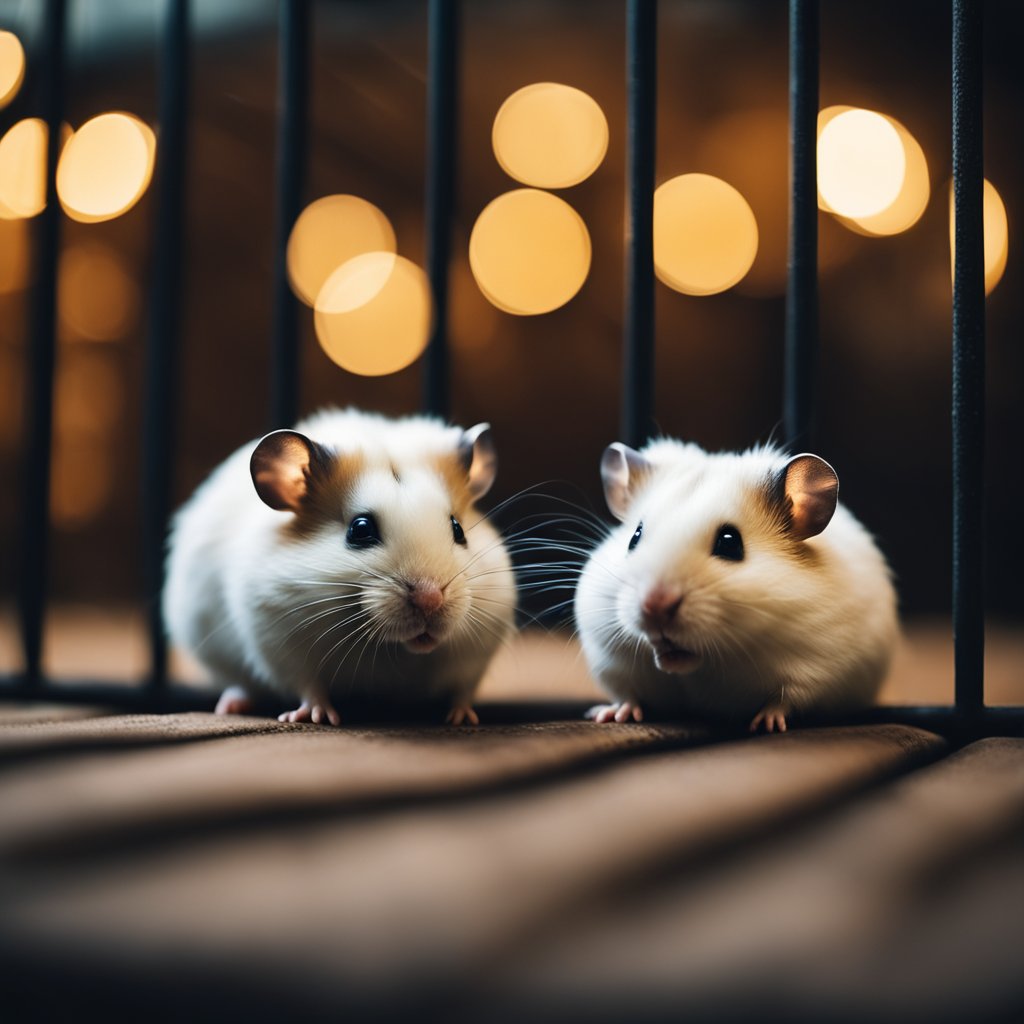Do Hamsters Hiss? The Truth About Hamster Vocalizations
Do hamsters hiss? If you’re a hamster owner or considering getting one, you may be wondering about the different vocalizations that hamsters make. Hissing is one of the sounds that hamsters can produce, and it can be alarming to hear if you’re not sure what it means. In this article, we’ll explore the reasons why hamsters hiss and what it means for their behavior.

Understanding Hamster Vocalizations Hamsters are known for making a variety of sounds, from squeaks and chirps to hisses and growls. These sounds can be used to communicate with other hamsters, as well as with humans. Some hamster sounds are more common than others, and hissing is one that you may not hear as frequently. Hissing is a sound that can indicate that your hamster is feeling threatened or uncomfortable.
Behavioral Context of Hissing When a hamster hisses, it’s usually a sign that they’re feeling threatened or frightened. This can occur if they’re in a new environment, if they encounter a new person or animal, or if they feel like their territory is being invaded. Hissing is a way for hamsters to communicate that they want to be left alone and that they’re feeling stressed or anxious. As a hamster owner, it’s important to understand the context in which your hamster is hissing so that you can respond appropriately.
Key Takeaways
- Hamsters can hiss when they feel threatened or uncomfortable.
- Hissing is a way for hamsters to communicate that they want to be left alone and that they’re feeling stressed or anxious.
- Understanding the context in which your hamster is hissing can help you respond appropriately.
Understanding Hamster Vocalizations
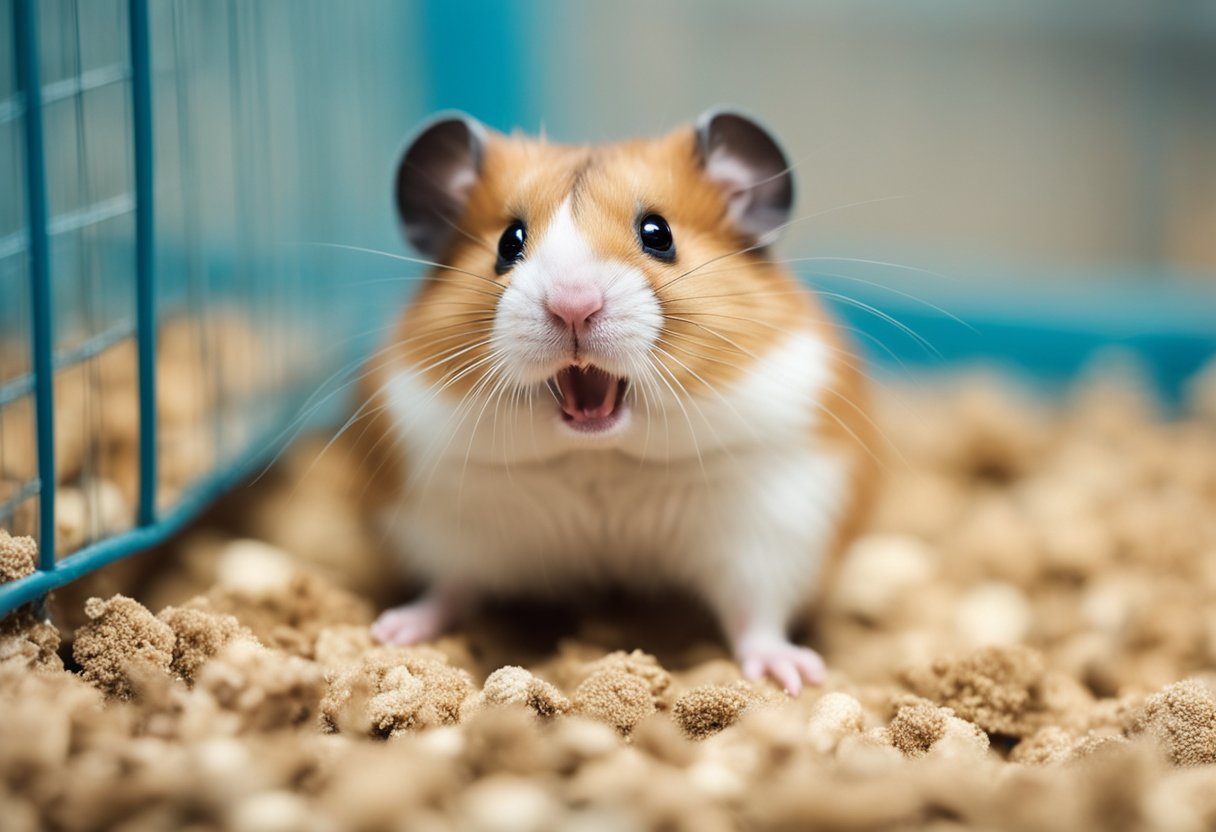
Hamsters are known for their vocalizations, which they use to communicate with their owners and other hamsters. Understanding these vocalizations is essential for taking care of your pet hamster. In this section, we’ll explore the different types of hamster noises and the reasons for hissing.
Reasons for Hissing
Hissing is a common hamster vocalization that can have different meanings. Hamsters may hiss when they feel threatened or scared. They may also hiss when they are in pain or uncomfortable. If your hamster is hissing, it’s essential to observe their behavior and try to identify the cause of the hissing.
One reason for hissing could be that your hamster is in pain. Hamsters may hiss when they have an injury or illness. If you notice your hamster hissing and showing signs of pain, such as limping or not moving, it’s essential to take them to a veterinarian immediately.
Another reason for hissing could be that your hamster is scared or feeling threatened. Hamsters may hiss when they feel threatened by other animals or humans. If your hamster is hissing, it’s important to give them space and avoid handling them until they feel safe.
Types of Hamster Noises
Hamsters make a variety of noises, each with its own meaning. Some of the most common hamster noises include squeaking, chirping, and grunting. Squeaking is the most common hamster noise and is often a sign of happiness or excitement. Hamsters may also squeak when they are in pain or feeling threatened.
Chirping is another common hamster noise and is often a sign of contentment. Hamsters may chirp when they are relaxed and comfortable. Grunting is a less common hamster noise and is often a sign of annoyance or aggression. Hamsters may grunt when they are feeling territorial or when they are in a bad mood.
In conclusion, understanding hamster vocalizations is essential for taking care of your pet hamster. Hissing is a common hamster vocalization that can have different meanings, including pain and fear. Hamsters make a variety of noises, each with its own meaning, including squeaking, chirping, and grunting.
Behavioral Context of Hissing
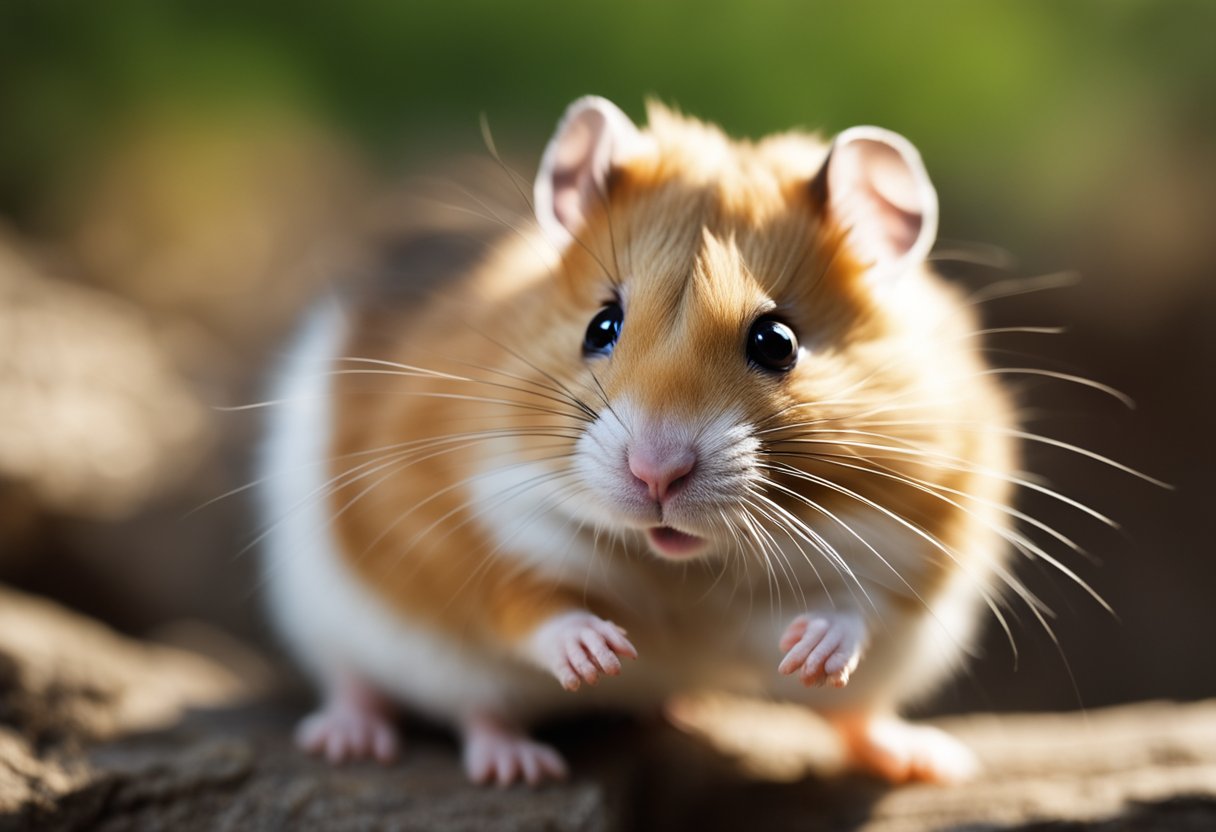
When it comes to hamsters, hissing is a common behavior that they exhibit. It can be a sign of aggression, fear, or a way of communicating with other hamsters. In this section, we will explore the different contexts in which hamsters hiss.
Aggression and Fear
Hissing in hamsters is often associated with aggression and fear. When a hamster feels threatened or scared, it may arch its back, puff up its fur, and emit a hissing sound. This behavior is a way of warning off a perceived threat and communicating that it is ready to defend itself if necessary. According to Hamster Answers, if the hiss doesn’t work, the hamster will revert to biting, which is a last-ditch defense.
Communication with Other Hamsters
Hissing can also be a way for hamsters to communicate with each other. According to Petshun, hissing is a form of communication that hamsters use to warn other hamsters of potential danger. In the wild, hamsters live in groups, and hissing can be a way of maintaining social order and avoiding conflict.
Response to Environment
Hissing can also be a response to the environment. According to ZooNerdy, hamsters may hiss when they feel uncomfortable or stressed in their environment. For example, if a hamster is in a new cage or unfamiliar territory, it may hiss as a way of expressing its discomfort. It is important to pay attention to your hamster’s body language and environment to determine the cause of the hissing behavior.
In summary, hissing is a common behavior in hamsters that can be a sign of aggression, fear, communication with other hamsters, or a response to the environment. By understanding the different contexts in which hamsters hiss, you can better understand your pet’s behavior and respond appropriately.
Resources
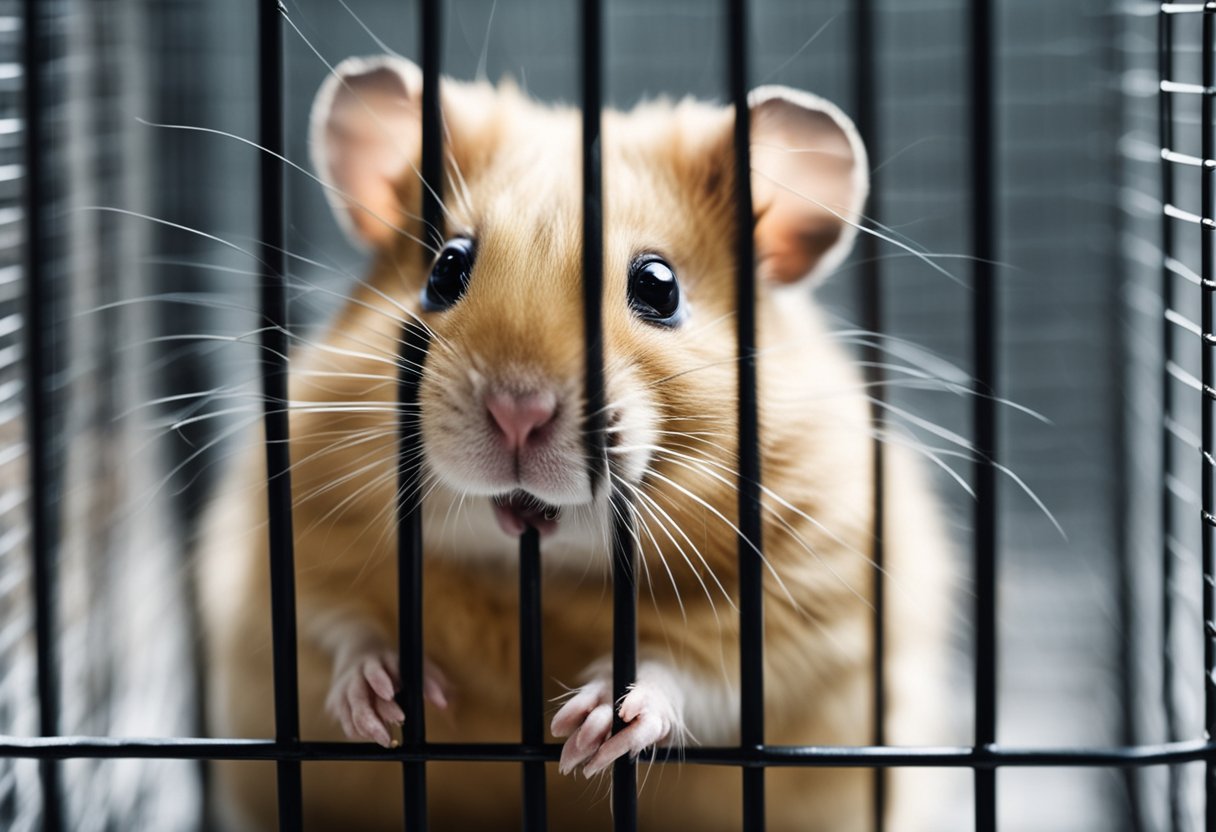
If you want to learn more about why hamsters hiss, there are many resources available online. Here are a few that you might find helpful:
- Pet Keen: This website provides a list of common hamster sounds and their meanings, including hissing. According to the site, hissing is a sign of discomfort and can indicate that a hamster feels threatened or angry.
- HamsterAnswers.com: This site offers a comprehensive guide to the different noises that hamsters make, including chattering, squeaking, and hissing. The site explains that hamsters may hiss when they are feeling anxious or in pain.
- Petsvills: This website provides a detailed list of the different sounds that hamsters make and their meanings. The site explains that hamsters may hiss when they are feeling threatened or uncomfortable.
In addition to these resources, there are many other websites and forums where you can find information about hamster behavior and care. If you have specific questions or concerns about your own hamster, you may want to consult with a veterinarian or a knowledgeable pet store employee.
Conclusion
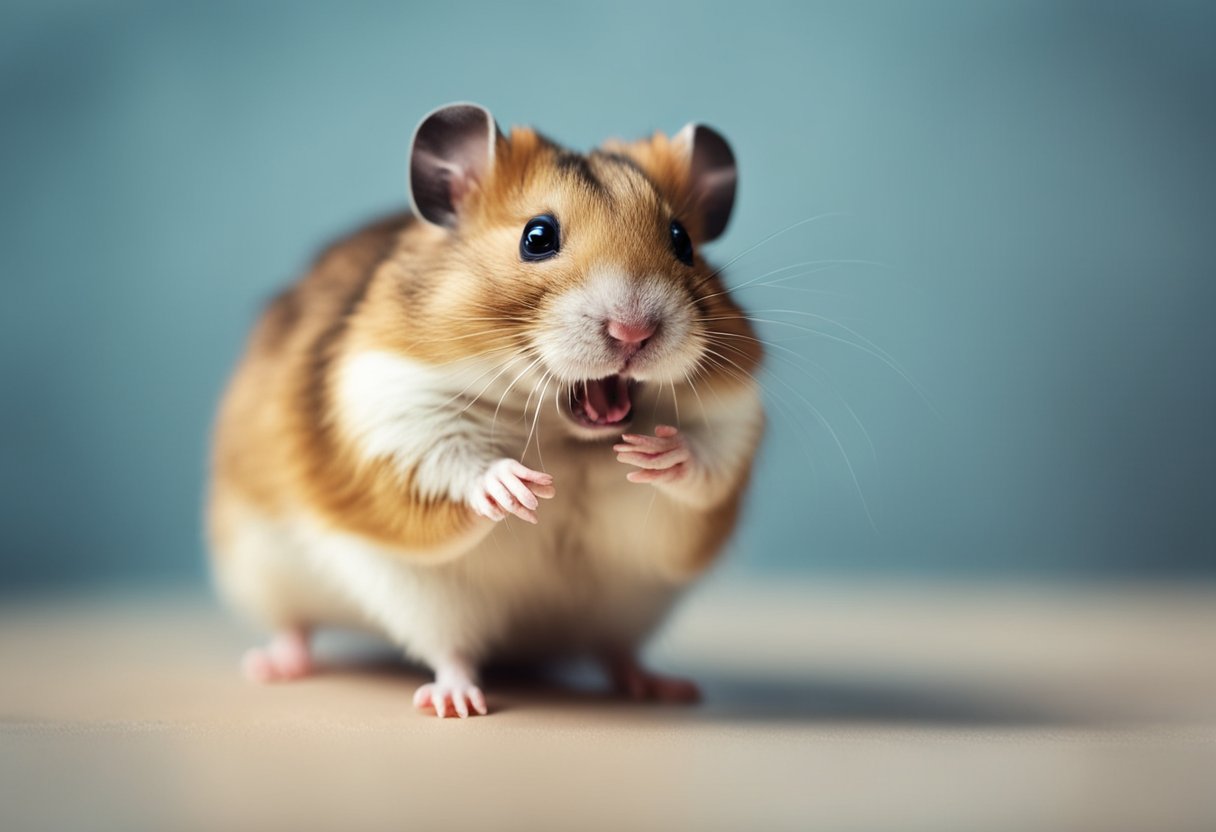
In conclusion, hamsters may hiss for a variety of reasons, including fear, anger, territoriality, or illness. It is important to understand your hamster’s body language and vocalizations to determine what may be causing the hissing.
When a hamster hisses, it is usually a sign that they are feeling threatened or uncomfortable. It is important to give your hamster space and time to adjust to their environment, especially if they are in a new home.
If your hamster is hissing frequently or showing other signs of illness or discomfort, it is important to seek veterinary care. A hissing hamster may be a sign of a more serious health issue, such as dental problems or respiratory infections.
Overall, understanding your hamster’s behavior and needs is key to providing them with a happy and healthy life. By observing their body language and vocalizations, you can better understand what your hamster is trying to communicate to you.
Frequently Asked Questions

What are the signs of aggression in hamsters?
Hamsters can display aggressive behavior when they feel threatened or territorial. Some signs of aggression include biting, hissing, arching their backs, and puffing up their fur. If your hamster is displaying these behaviors, it’s best to give them space and avoid handling them until they calm down.
How can I tell if my hamster is scared or stressed?
Hamsters can display a variety of behaviors when they are scared or stressed. These may include hiding, freezing in place, shaking, or running away. If your hamster is exhibiting any of these behaviors, it’s best to give them space and try to identify the source of their stress. Common stressors include loud noises, sudden movements, and being handled too roughly.
What does it mean when a hamster makes vocal sounds?
Hamsters can make a variety of vocal sounds, including squeaking, chirping, hissing, and clicking. These sounds can indicate a range of emotions, from excitement to fear. It’s important to pay attention to your hamster’s body language and context to determine what their vocalizations mean.
How should I approach a hamster that is showing signs of fear?
If your hamster is showing signs of fear, it’s important to approach them slowly and calmly. Avoid making sudden movements or loud noises, and try to make yourself appear non-threatening. You can offer your hamster a treat to help build trust, but be careful not to force them to interact with you if they are not comfortable.
What are effective methods for calming a distressed hamster?
If your hamster is distressed, there are several things you can do to help calm them down. First, make sure they are in a quiet and secure environment. You can also offer them a treat or a toy to distract them from their stress. If your hamster is still upset, you can try holding them gently and speaking to them in a calm, soothing voice.
Can a hamster’s behavior indicate illness or discomfort?
Yes, a hamster’s behavior can be a sign of illness or discomfort. If your hamster is displaying unusual behaviors, such as lethargy, loss of appetite, or difficulty breathing, it’s important to take them to a veterinarian as soon as possible. These behaviors can indicate a range of health issues, from respiratory infections to dental problems.
